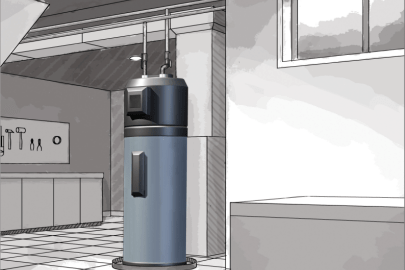Essential Maintenance Tips for Your Home's Hot Water System
Essential Maintenance Tips for Your Home's Hot Water System
Blog Article
What are your thoughts on How to Maintain Your Water Heater & Prolong its Life?

Warm water is necessary for everyday comfort, whether it's for a refreshing shower or cleaning dishes. To guarantee your hot water system runs efficiently and lasts much longer, routine maintenance is vital. This post gives useful tips and understandings on exactly how to maintain your home's warm water system to prevent interruptions and pricey repair services.
Introduction
Keeping your home's hot water system could appear challenging, but with a couple of basic steps, you can guarantee it operates efficiently for years ahead. This guide covers everything from comprehending your hot water system to DIY upkeep ideas and recognizing when to call expert aid.
Significance of Keeping Your Hot Water System
Normal maintenance not just extends the life-span of your hot water system however also ensures it runs efficiently. Disregarding maintenance can bring about decreased effectiveness, greater energy expenses, and also premature failing of the system.
Signs Your Hot Water System Demands Maintenance
Understanding when your warm water system needs attention can avoid significant issues. Look out for indications such as irregular water temperature, weird noises from the heating unit, or corroded water.
Understanding Your Hot Water System
Before diving right into upkeep tasks, it's practical to recognize the basic elements of your warm water system. Commonly, this includes the water heater itself, pipelines, anode rods, and temperature level controls.
Month-to-month Upkeep Tasks
Regular regular monthly checks can aid capture small concerns before they rise.
Purging the Hot Water Heater
Purging your water heater gets rid of sediment build-up, boosting performance and prolonging its life.
Monitoring and Changing Anode Rods
Anode poles stop corrosion inside the container. Examining and replacing them when worn is vital.
Inspecting and Adjusting Temperature Level Setups
Adjusting the temperature settings ensures optimal performance and safety.
DIY Tips for Maintenance
You can do a number of maintenance tasks yourself to keep your warm water system in leading condition.
Checking for Leakages
Regularly inspect pipelines and links for leakages, as these can cause water damage and higher costs.
Examining Stress Alleviation Valves
Evaluating the pressure relief valve ensures it functions appropriately and prevents excessive pressure buildup.
Insulating Pipes
Protecting warm water pipes decreases warm loss and can conserve power.
When to Call an Expert
While do it yourself upkeep is helpful, some problems need professional experience.
Complex Problems Requiring Expert Assistance
Examples consist of major leakages, electrical troubles, or if your water heater is consistently underperforming.
Routine Professional Maintenance Advantages
Expert maintenance can include comprehensive examinations, tune-ups, and making sure conformity with safety requirements.
Verdict
Regular maintenance of your home's warm water system is crucial for effectiveness, durability, and cost financial savings. By following these pointers and knowing when to look for professional assistance, you can ensure a trusted supply of hot water without unanticipated interruptions.
How to Maintain an Instant Hot Water Heater
Before tinkering with your hot water heater, make sure that it’s not powered on. You also have to turn off the main circuit breaker and shut off the main gas line to prevent accidents. Also turn off the water valves connected to your unit to prevent water from flowing into and out of the appliance. 2. When you’re done, you have to detach the purge valves’ caps. These look like the letter “T†and are situated on either side of the water valves. Doing so will release any pressure that has accumulated inside the valves while at the same time avoid hot water from shooting out and burning your skin. 3. When the purge valves’ caps are removed, you have to connect your hosing lines to the valves. Your unit should have come with three hoses but if it didn’t, you can purchase these things from any hardware or home repair shops. You can also get them from retail stores that sell water heating systems. Read the user’s manual and follow it to complete this task properly. When the hosing lines are connected, open the purge port’s valves. 4. You should never use harsh chemical cleaners or solutions when cleaning your unit. Make use of white vinegar instead. It should be undiluted and you’ll probably use about 2 gallons. 5. Now flush your water heater. This task should probably take about 40 minutes. We can’t give you specific directions for this because the procedure is carried out depending on the type, model and brand of your heater. With that being said, refer to the user’s manual. 6. When you’re done draining the unit, you have to turn off the purge port valves again. Remove the hosing lines that you earlier installed on each of the water valves. Put the valve caps (purge port) back in their respective places and be very careful so as not to damage the rubber discs that are found inside these caps. 7. Now that everything’s back in place, check your user’s manual again to find out how to reactivate your water heating system. 8. Once it is working, turn one of your hot water faucets on just to let air pass through the heater’s water supply pipes. Leave the tap on until water flows smoothly out of it. https://www.orrplumbing.com/blog/2014/september/how-to-maintain-an-instant-hot-water-heater/

We hope you liked our section on Tips on Maintaining a Water Heater. Thank you for taking the time to browse our piece of content. Loved our piece? Please share it. Help another person find it. Bless you for your time. Kindly come visit our website back soon.
Schedule Appointment Report this page